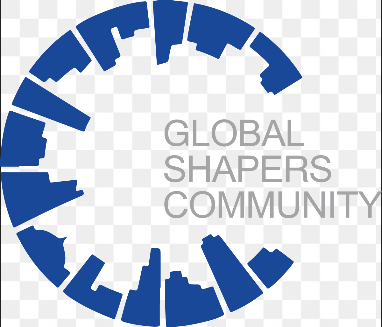Looking into the WEF’s Global Shapers Community (Part 2)
• Rob McLean originally published at dailyrasp.com
• September 14, 2020
• 12:35 pm
This is my second article looking into the Global Shapers Community (GSC). You can read my previous article here.
Members of the Global Shapers Community are fond of declarative statements: “Today’s youth are the best equipped to change the world and no one believes this more than we do.” Imagine my surprise upon learning youth believe they are ones with all the answers.
Except it is adults saying this, and they are saying it to the younger people.
“What is it like to build a community that is non-political, self-selected and self-organized around issues facing the globe?”
But wait, there’s more: “Youth were disgruntled by their unrealized voice on issues shaping their future and youth have the ability to band together to force meaningful change. The conclusion — we are deserving of a seat at the table, to be apart of the decisions that affect our lives.”
All while that sounds rather hyperbolic even uninformed but to its intended audience it’s both sales pitch and kindling. In the world of Global Shapers youth are the future and the future is youth.
In 2015, according to the UN Population Fund there were 1.8B people aged 10 to 24. And it was this bulge in world demography that four years earlier inspired Klaus Schwab’s creation the Global Shapers Community.
With a membership well north of 9,000 across some 140 countries that counts as substantial organization. All spun up from nothing inside of 10 years. As I wrote in Part 1, Global Shapers is a product of Klaus Schwab and his World Economic Forum (WEF). Yet, outside of the sphere of change-agents and civil-society actors, virtually no one hears anything of this community.
The locus of Global Shapers’ members of a city is the Hub consisting of 20 to 50 members. Should a Hub fail to attract 20 members within 1 year of creation it will be disbanded. Should more than 50 candidates be available, the Hub will be slip into two separate groups.
Each Hub elects a Curator to act as Hub Chair. A Curator’s mandate runs for one year.
Members must apply and then be nominated. Guided by the Community Charter each applicant is reviewed against “comprehensive Selection Guidelines to help Hubs to identify and select the best Global Shapers”.
Make no mistake, members are highly educated, have entrepreneurial or intrapreneurial experience at high-level positions of influence, and are committed to “deeply engage in the Shapers Community, reinforcing its mission and objectives …”
Hub membership as I understand is for a maximum of 5 years or to age 33 whichever occurs first. Age is restricted to 20 to 29 years at the time of nomination. So … not youth and also not “disgruntled“
Both Hubs and members are held to a strict timeline. Each Hub must create community projects. Every member must actively engage each year in at least one local Hub project and also actively participate in one global activity developed by the Global Shapers Community Foundation (more on the that later).
While each Hub is organized independently developing its own rules to fit the local context but still adhering to principles of the official Community Charter. Should a Curator or member not fulfill obligations of the Community Charter there are of course rules for a remedy.
Looking into the Global Shapers Community I learn that in all activities of each GS Hub is governed by the Global Shapers Community Foundation and managed by the Global Shapers Team. Both the GSCF and the GST are based at the headquarters of the WEF in Geneva.
(Categories: Globalism; Technocracy)
Part 3 will be posted very soon.
Follow and comment via the socials: @dailyrasp Twitter, Gab, Minds
https://www.dailyrasp.com/
Twitter and Gab and Minds: dailyrasp
Parler: robatdailyrasp
© TDRmedia2020
